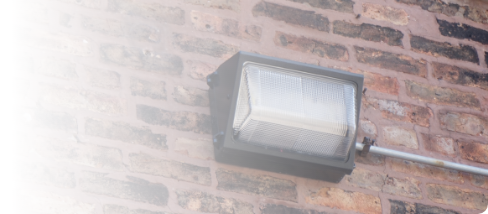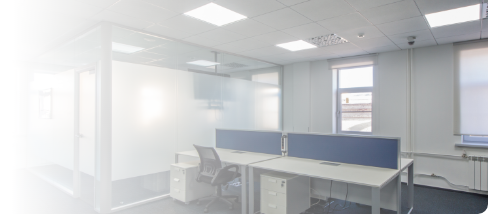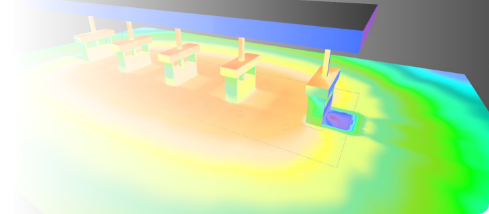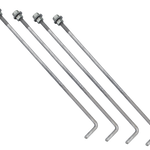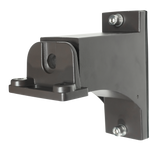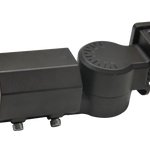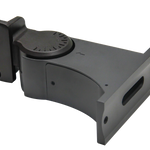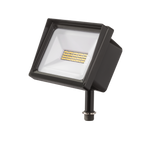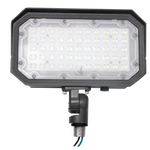You have no items in your shopping cart.
Murphy’s Law says that if something can go wrong, it probably will. Ideally, setting up lights would be straightforward, and once done, you'd never need to return to that site. But sometimes, during installation, unexpected challenges can arise. To help you be prepared, here's a list of potential hurdles and how to avoid them.
Assessment Challenges:
- Misjudging the number of fixtures required.
- Overlooking the electrical load or wiring changes needed for the retrofit.
Solutions to Address Specific Assessment Challenges:
Misjudging the Number of Fixtures Required:
- Detailed Site Survey: Conduct a comprehensive site survey to determine the exact number of fixtures in the existing setup and assess the needs for the new setup.
- Use Photometric Analysis: Photometric studies can provide a detailed analysis of how light will be distributed throughout a space, helping to determine the number and placement of fixtures needed for optimal illumination.
- Engage Experts: If unsure, consider hiring or consulting with a lighting design expert who can provide guidance based on the space's needs.
- Software Tools: Utilize lighting design software that can help in creating accurate layouts and calculate the number of fixtures required.
- Safety Margin: Always order a small percentage more than the calculated requirement to account for any unforeseen changes or mistakes.
Overlooking the Electrical Load or Wiring Changes Needed for the Retrofit:
- Thorough Electrical Assessment: Before starting the retrofit, a detailed electrical load assessment should be conducted to understand the current and future demands.
- Consult with Electrical Engineers: An electrical engineer can provide insights into the necessary changes, potential challenges, and solutions regarding electrical load and wiring.
- Circuit Load Analysis: Evaluate each circuit to determine its current load and how much additional load it can handle. This will provide clarity on whether new circuits are required or if existing circuits need upgrades.
- Updated Electrical Diagrams: Keep updated electrical diagrams of the site, highlighting areas where changes or upgrades are needed. This can act as a guide during the retrofit process.
- Safety Precautions: Ensure that the electrical system, including circuit breakers and fuses, is designed to handle any sudden surges or changes in load. Install protective devices where necessary.
- Periodic Checks: During the retrofit process, regularly check the electrical load to ensure it's within safe limits and make adjustments as necessary.
Product Issues:
- Receiving defective LED lights or fixtures.
- LED lights not being as bright as expected or producing uneven lighting.
- Mismatch between the promised lifespan of LED products and their actual performance.
Solutions to Address Specific Product Issues:
Receiving Defective LED Lights or Fixtures:
- Vendor Quality Assurance: Ensure you're sourcing your products from reputable vendors with strong quality assurance processes in place.
- Batch Testing: Upon receiving a shipment, randomly test a few fixtures to ascertain the quality and functioning.
- Warranty and Return Policies: Have clear agreements with suppliers regarding the return or replacement of defective items. Ensure warranties cover an adequate period and are honored by suppliers.
- Stock Backup: Always keep a small percentage of backup stock to quickly replace any defective units without delaying the project.
LED Lights Not Being as Bright as Expected or Producing Uneven Lighting:
- Detailed Product Specifications: Before purchase, ensure you have detailed specifications, including luminosity, color temperature, and beam angles.
- Photometric Analysis: Perform photometric analysis during the design phase to simulate lighting conditions and make necessary adjustments.
- Adjustable Fixtures: Consider using adjustable fixtures that allow repositioning to optimize light distribution.
- Periodic Reviews: After installation, periodically check the lighting conditions. If they're not as desired, consider adding supplemental lighting or adjusting existing fixtures.
Mismatch Between the Promised Lifespan of LED Products and Their Actual Performance:
- Due Diligence: Ensure you're sourcing products from manufacturers with a solid track record in terms of product lifespan and performance.
- Maintenance Guidelines: Follow all recommended maintenance guidelines to maximize the lifespan of the LED products.
- Monitor Environmental Conditions: Ensure the environment (like humidity, temperature, etc.) where LEDs are installed is conducive to their optimal performance and longevity.
- Feedback Loop: Maintain a feedback loop with your clients to monitor product performance over time. This will help in catching early signs of wear or malfunction.
- Extended Warranties: Opt for products that come with longer warranties, ensuring that if they don't meet the promised lifespan, they can be replaced at minimal or no cost.
Installation Challenges:
- Difficulty in removing old fixtures without causing damage.
- Challenges in accessing hard-to-reach areas.
- Incompatibility between existing wiring and new LED fixtures.
- Issues with dimming or integrating with existing control systems.
Solutions to Address Specific Installation Challenges:
Difficulty in Removing Old Fixtures Without Causing Damage:
- Training: Offer training sessions for contractors on safe and efficient removal techniques.
- Tools and Equipment: Ensure contractors are equipped with the right tools that are specifically designed for fixture removal, minimizing the potential for damage.
- Pre-installation Survey: Conduct a thorough survey before installation to identify fixtures that might be particularly challenging to remove and develop a strategy accordingly.
Challenges in Accessing Hard-to-Reach Areas:
- Specialized Equipment: Use extendable ladders, scaffolding, or boom lifts to access high or difficult-to-reach areas.
- Safety Protocols: Implement safety protocols and provide personal protective equipment to prevent accidents when working in hard-to-reach areas.
- Skilled Labor: Hire or train workers who specialize in working in challenging environments, ensuring that they have the required experience and expertise.
Incompatibility Between Existing Wiring and New LED Fixtures:
- Modular Wiring Solutions: Use modular wiring systems that can be easily adapted to various fixtures.
- Pre-installation Electrical Audit: Before starting the installation, conduct an audit to understand the existing wiring system and determine any modifications required.
- Customizable Fixtures: Source LED fixtures that are designed to be compatible with a wide range of existing wiring systems.
Issues with Dimming or Integrating with Existing Control Systems:
- Compatibility Check: Before purchasing, ensure that LED products are compatible with existing dimming and control systems.
- Updated Control Systems: Consider upgrading older control systems that might not be compatible with modern LED technologies.
- Technical Support: Partner with LED suppliers who offer robust technical support for integrating products into existing systems.
- Use of Adaptors or Converters: In cases where direct compatibility is not possible, use adaptors or converters that can bridge the gap between the new LEDs and existing systems.
Technical Difficulties:
- LED driver failures or malfunctions.
- Flickering lights due to compatibility issues with existing circuits.
- Electromagnetic interference affecting other devices in the building.
- Overheating of fixtures due to improper installation or lack of ventilation.
Solutions to Address Specific Technical Difficulties:
LED Driver Failures or Malfunctions:
- Quality Assurance: Source from reputable manufacturers who adhere to strict quality control processes.
- Warranty & Replacement Policy: Ensure a strong warranty and easy replacement policy for faulty drivers.
- Regular Maintenance Checks: Implement periodic checks to identify and address issues before they escalate.
Flickering Lights Due to Compatibility Issues with Existing Circuits:
- Compatible Dimmers: Use LED-compatible dimmers to reduce flickering issues.
- Electrical System Audit: Before installation, assess the existing circuits and make necessary modifications.
- Voltage Stabilizers: Use voltage stabilizers to ensure a consistent power supply and reduce flickering.
Electromagnetic Interference Affecting Other Devices in the Building:
- Shielding: Use LED fixtures with built-in shielding to reduce electromagnetic emissions.
- Certified Products: Purchase products that meet Electromagnetic Compatibility (EMC) standards.
- Isolation: If possible, separate circuits of LED lights from sensitive devices that might be affected by interference.
Overheating of Fixtures Due to Improper Installation or Lack of Ventilation:
- Proper Installation: Ensure LED fixtures are installed with adequate space and not too close to heat-sensitive surfaces.
- Ventilation: If fixtures are enclosed, ensure there's adequate ventilation to dissipate heat. Consider using fans or heat sinks if necessary.
- Thermal Management Solutions: Use LED products with integrated thermal management features to regulate heat effectively.
- Periodic Inspections: Schedule regular inspections to check for signs of overheating and rectify any issues promptly.
Regulatory and Compliance Issues
- Not meeting local building codes or regulations for commercial lighting.
- Failing to qualify for energy efficiency rebates or tax incentives due to not meeting certain specifications.
Solutions to Address Specific Regulatory and Compliance Issues:
1. Not Meeting Local Building Codes or Regulations for Commercial Lighting:
- Consult Local Authorities: Consult local building and electrical codes before starting any retrofitting project.
- Hire Experienced Contractors: Engage with contractors who are knowledgeable about local regulations.
- Regular Training: Ensure team members are trained on updates to local codes and regulations.
- Third-party Certification: Obtain certifications that validate compliance of products and installation methods.
- Documentation: Keep records of all installations, including products used and inspections.
2. Failing to Qualify for Energy Efficiency Rebates or Tax Incentives:
- Research Incentives: Stay informed about available tax incentives and rebates for energy-efficient lighting.
- Product Certification: Use LED products certified for energy efficiency.
- Engage with Energy Consultants: Collaborate with consultants to ensure projects meet rebate criteria.
- Documentation: Keep thorough documentation for each project.
- Post-installation Audits: Perform energy audits to validate project eligibility for rebates.
- Transparent Communication: Communicate upfront about any products or installations that might not qualify.
Solutions to Address Specific Project Management Challenges:
1. Delays in Shipments or Receiving the Wrong Order:
- Advanced Ordering: Place orders in advance to account for potential delays.
- Vetted Suppliers: Work with reliable suppliers and review their performance.
- Inventory Management: Maintain a stock of commonly used LED fixtures and parts.
- Order Verification: Double-check orders before placement and upon receipt.
- Real-time Tracking: Use tracking to stay informed about delivery timelines.
2. Projects Going Over Budget:
- Detailed Budgeting: Start with a detailed budget, including potential challenges.
- Contingency Planning: Allocate a budget for unforeseen expenses.
- Regular Monitoring: Conduct regular budget reviews.
- Transparent Communication: Keep clients informed about budgetary concerns.
- Risk Assessment: Anticipate potential challenges and plan financially.
3. Miscommunication with Clients:
- Clear Contracts: Draft clear contracts outlining project scope and deliverables.
- Regular Updates: Provide clients with regular project updates.
- Feedback Mechanism: Implement a structured feedback system.
- Dedicated Project Manager: Assign a project manager for each project.
- Document Everything: Keep a record of all communications and decisions.
Solutions to Address Specific Safety Concerns:
1. Electrical Issues Leading to Potential Fire Hazards:
- Professional Inspection: Inspect wiring and circuits before installation.
- Quality Products: Use high-quality LED fixtures meeting safety standards.
- Proper Wiring: Ensure correct wiring to avoid overloads.
- Safety Devices: Install circuit breakers and surge protectors.
- Regular Maintenance: Conduct electrical maintenance checks.
2. Injuries During Installation:
- Safety Training: Provide safety training for installation personnel.
- Protective Gear: Ensure workers wear protective gear.
- Safety Protocols: Establish and adhere to safety protocols.
- First Aid: Keep a first-aid kit on-site and train some team members in basic first-aid.
- Emergency Plan: Develop and communicate an emergency plan.
3. Issues with Emergency Lighting or Escape Route Visibility:
- Regular Testing: Test emergency lighting systems frequently.
- Clear Signage: Install visible signage for escape routes and exits.
- Backup Power: Ensure reliable backup power for emergency lights.
- Adequate Illumination: Install sufficient emergency lights for escape routes.
- Safety Audits: Conduct safety audits and make necessary adjustments.
Solutions to Address Specific Post-installation Problems:
1. Premature Failure or Dimming of LED Lights:
- Warranty Coverage: Ensure a comprehensive warranty for LED fixtures.
- Quality Products: Purchase from reputable manufacturers.
- Periodic Maintenance: Schedule regular check-ups.
- Protect from Overheating: Ensure proper ventilation for fixtures.
2. Increased Energy Consumption:
- Monitor Energy Usage: Track consumption to identify anomalies.
- Correct Installation: Ensure correct installations for efficiency.
- Update Control Systems: Optimize lighting control systems for LEDs.
- Educate End Users: Train occupants on efficient lighting use.
3. Difficulty in Servicing or Replacing Fixtures:
- Modular Design: Choose fixtures with a modular design.
- Clear Documentation: Maintain installation guides and diagrams.
- Spare Parts: Keep a stock of common spare parts.
- Accessible Design: Ensure easy accessibility for installation.
4. Color Inconsistencies:
- Batch Consistency: Purchase LEDs from a single batch.
- Calibration: Use control systems for color calibration.
- Quality Assurance: Work with manufacturers with tight color specifications.
- Testing Before Installation: Test LEDs for color differences before installation.
Solutions to Address Specific Customer Satisfaction Issues:
1. Clients Not Satisfied with Lighting Aesthetics or Output:
- Pre-Installation Consultation: Understand client preferences before retrofit.
- Sample Installations: Offer trial installations.
- Flexible Product Options: Provide a range of designs and styles.
- Customizable Settings: Use customizable fixtures.
2. Complaints About Ambiance Changes:
- Educate the Client: Discuss benefits and color temperature options.
- Color Temperature Options: Offer various color temperatures.
- Use Diffusers or Shades: Soften light for preferred ambiance.
- Feedback Loop: Collect feedback and make adjustments.
3. Negative Feedback on Light Glare or Brightness:
- Anti-Glare Fixtures: Invest in fixtures designed to reduce glare.
- Positioning and Angle: Install LEDs to minimize direct light.
- Dimming Solutions: Incorporate dimmable fixtures.
- Occupant Surveys: Survey occupants for feedback.
Solutions to Address Specific Environmental Concerns:
1. Proper Disposal of Old Fixtures and Bulbs:
- Recycling Partnerships: Collaborate with specialized recycling facilities.
- Educate Clients: Inform clients about safe disposal methods.
- Disposal Services: Offer disposal services in retrofitting packages.
- Safe Storage: Store old fixtures and bulbs safely.
2. Environmental Concerns with LEDs:
- Product Transparency: Provide documentation on environmental impact.
- Eco-friendly Manufacturing: Collaborate with eco-friendly manufacturers.
- Longevity: Focus on the durability of LED products.
- Energy Efficiency: Continually improve energy efficiency.
- Green Certifications: Obtain certifications like Energy Star.
Solutions to Address Specific Vendor and Supplier Issues:
1. Warranty Claims and Replacement Delays:
- Clear Contractual Agreements: Establish clear warranty terms with vendors.
- Dedicated Warranty Team: Have a team for managing warranty claims.
- Maintain Documentation: Keep records of product batches and issues.
- Alternative Suppliers: Have backup suppliers for quick replacements.
2. Misleading Product Specifications:
- Third-party Testing: Verify claims with third-party agencies.
- Transparent Communication: Communicate the importance of accuracy.
- Sample Testing: Test sample products before bulk ordering.
- Feedback Mechanism: Provide feedback for continuous improvement.
3. Product Support or After-sales Service Issues:
- Service Level Agreements (SLAs): Create SLAs for expected support levels.
- Training: Train the team on product knowledge.
- Dedicated Support Contacts: Have designated contacts in the supplier's organization.
- Feedback Loops: Set up review meetings with suppliers.
- Alternative Support Options: Consider third-party or in-house support teams.
Solutions to Address Specific Financial Challenges:
1. Not Realizing the Promised ROI:
- Product Verification: Validate LED performance claims independently.
- Energy Audits: Conduct audits for optimal operation.
- Regular Maintenance: Implement a maintenance schedule.
- Contract Clauses: Include reimbursement clauses in vendor contracts.
2. Clients Withholding Payment:
- Clear Communication: Update clients on project progress.
- Milestone Payments: Set up payments at project stages.
- Dispute Resolution Mechanism: Establish a clear dispute resolution process.
- Performance Guarantees: Offer guarantees on product performance.
- Client Feedback: Gather regular feedback during the project.
- Transparent Contracts: Clearly define project scope and payment terms.
- Penalty & Reward System: Include clauses for early completion or delays.
Murphy’s Law says that if something can go wrong, it probably will. Ideally, setting up lights would be straightforward, and once done, you'd never need to return to that site. But sometimes, during installation, unexpected challenges can arise. To help you be prepared, here's a list of potential hurdles and how to avoid them.

